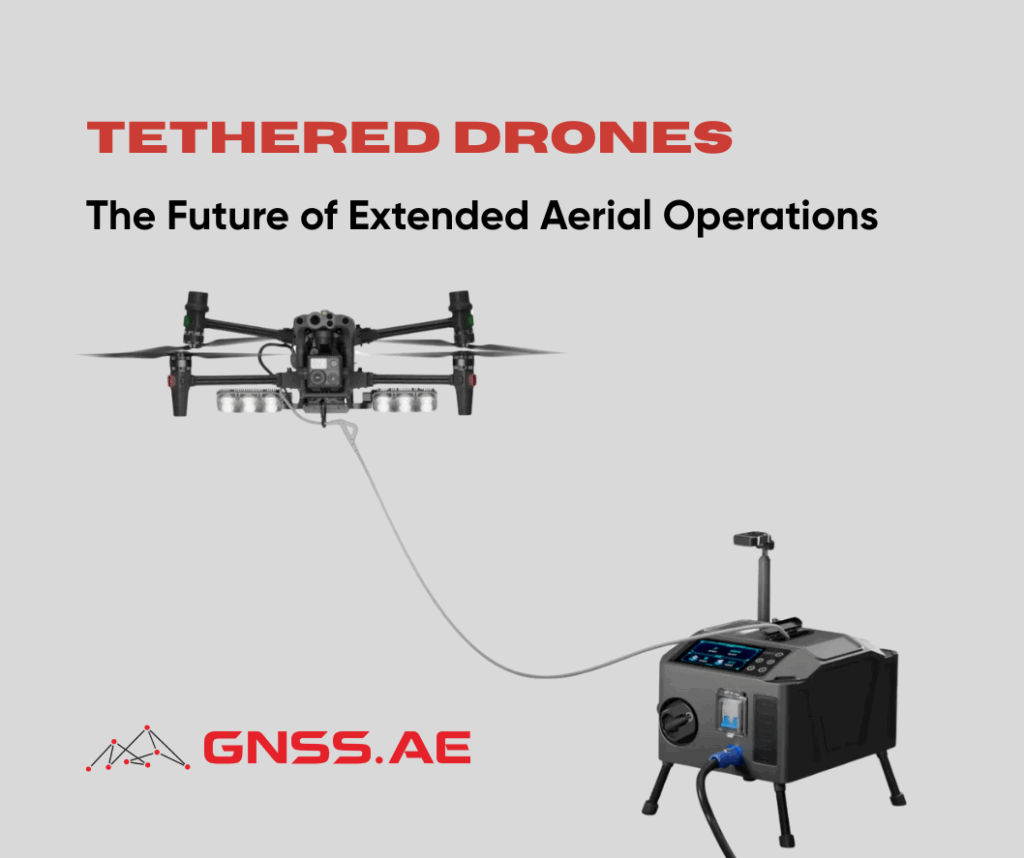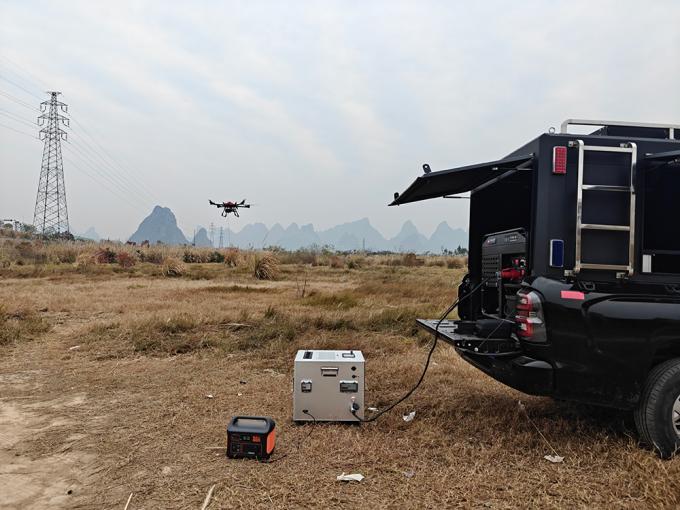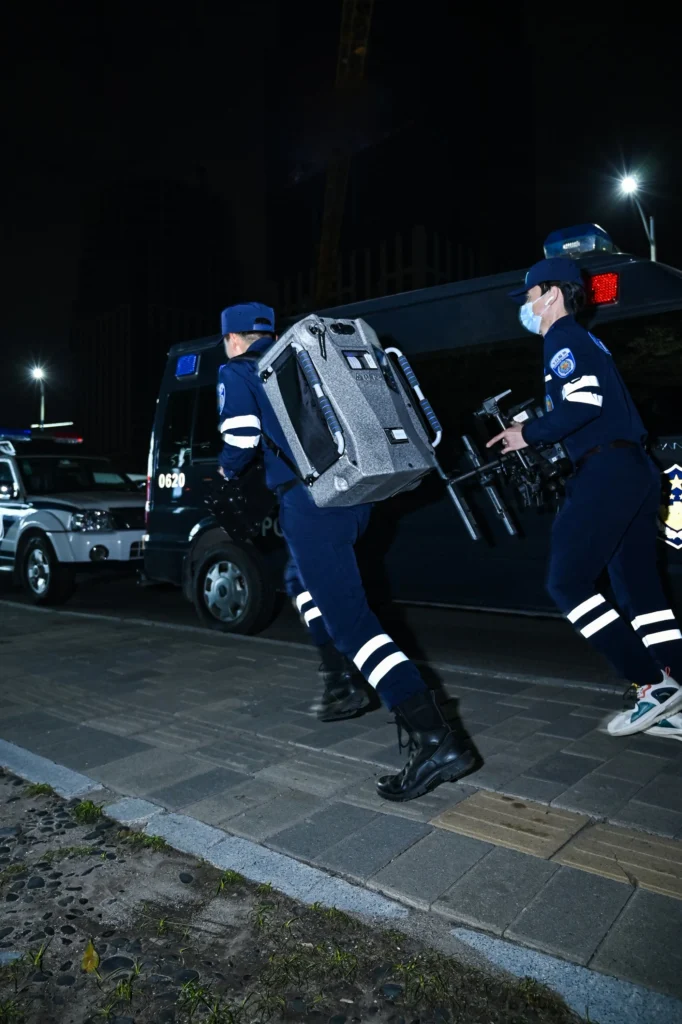
As drone technology continues to evolve, one innovation stands out for its ability to overcome traditional limitations: tethered drone systems. These specialized unmanned aerial vehicles (UAVs) are revolutionizing industries from law enforcement to industrial surveillance by offering unprecedented flight endurance and enhanced security features.
A tethered drone system represents a fundamental shift from conventional battery-powered UAVs. Instead of relying on onboard power sources, these drones maintain a physical connection to ground-based stations through specialized cables that deliver continuous power and enable secure data transmission. This umbilical connection transforms the operational capabilities of aerial platforms, extending their potential from minutes to hours of continuous operation.
The system architecture consists of five critical components working in harmony. The tether itself serves as the lifeline, carrying both electrical power and data signals between ground and air. A robust power supply unit ensures uninterrupted energy flow, while the control station provides operators with comprehensive mission management capabilities. The drone platform, specifically designed for tethered operations, carries mission-specific payloads including advanced camera systems and sensor arrays capable of collecting visual, thermal, and specialized data based on operational requirements.

The most significant advantage of tethered systems lies in their operational endurance. While traditional drones typically operate for 20-50 minutes on battery power, tethered systems can maintain continuous flight for 5 to over 50 hours, limited primarily by component wear and environmental conditions rather than power constraints. This capability makes them ideal for missions requiring sustained surveillance, monitoring, and data collection over extended periods.
Tethered drones address critical security vulnerabilities inherent in wireless communications. The physical tether provides a secure data pathway that eliminates concerns about signal jamming or hacking attempts common with radio frequency communications. Advanced models feature “dark-RF” capabilities, operating with zero radio emissions—a crucial advantage in tactical environments where stealth and resistance to electronic warfare measures are essential.
The tethered connection significantly reduces the risk of flyaways, signal loss, and communication interruptions that can compromise traditional drone missions. This reliability factor makes tethered systems particularly valuable for critical operations where mission failure could have serious consequences.

Public Safety and Law Enforcement
Tethered drones excel in public safety scenarios requiring continuous oversight. During large-scale events or crowd management situations, these systems provide command staff with persistent aerial awareness, enabling better coordination of ground teams and early identification of potential security concerns. For tactical operations, including SWAT deployments or active incident response, the uninterrupted surveillance capability allows real-time tactical coordination and enhanced situational awareness.
Traffic monitoring represents another significant application, where tethered drones provide continuous observation of vehicle flow during major events or emergency situations. This aerial perspective helps traffic managers optimize routes, identify congestion points, and coordinate rapid response to incidents.
Military and Defense Operations
In military contexts, tethered drones serve multiple critical functions. They establish temporary communication links in areas where traditional infrastructure is unavailable or compromised. For forward operating base (FOB) protection, these systems provide continuous perimeter surveillance, offering early threat detection and comprehensive situational awareness for base security teams.
Border protection agencies utilize tethered systems to monitor strategic crossing points and difficult-to-access areas, providing real-time surveillance capabilities that enable rapid response to suspicious activities.
Industrial and Commercial Applications
Industrial sites benefit significantly from tethered drone surveillance, particularly for preventing unauthorized access and monitoring sensitive operations. The continuous operation capability ensures uninterrupted security coverage during critical industrial processes, equipment movements, and emergency response coordination.
Emergency Response and Firefighting
Fire departments increasingly rely on tethered drones for structural fires and wildfire management. The systems provide continuous thermal imaging to monitor fire progression, identify hotspots, and track structural integrity. This persistent aerial intelligence helps incident commanders make informed resource allocation decisions and maintain crew safety throughout extended firefighting operations.
While tethered drones offer significant advantages, they do present certain operational constraints. The physical tether limits operational range, typically constraining operations to areas within the cable length. However, advanced camera payloads with powerful zoom capabilities can extend the effective surveillance range significantly.
Mobility represents another consideration, as tethered systems require ground-based power generation and tether management equipment. However, modern systems can be integrated onto mobile platforms, including ground vehicles and maritime vessels, partially addressing this limitation.
GNSS.AE stands as a trusted provider of tethered drone solutions, offering comprehensive systems designed to meet diverse operational needs across industries.
CZI TK300 Backpack Tethered Power System
CZI’s new generation tether power supply system – TK300 is coming with fully upgraded. The weight is significantly reduced, the IP protection level increased, two transportation mode is flexible and easy to use in various special scenes. The unique foldable waterproof stand, combined with working lighting to make the power system easily satisfies the night operation. TK300 includes two parts: power supply drone end and integrated power supply ground end.
CZI Tethered Power System with ML200 Matrix Light Combo
The CZI TK3 Tethered Power System with ML200 Matrix Light Set is expertly designed for efficiency and portability, making it an ideal choice for DJI drone operations. This system converts 220V AC to 400V DC, delivering high-voltage power to the drone through a durable nickel alloy power cable, enabling up to 24 hours of continuous flight. When paired with the ML200 Matrix lights, the system becomes essential for long-duration and large-area emergency lighting and monitoring in challenging scenarios.
Gesai Equipped With Dual RTK Functions Tethered Uav Relay System 150M30T
The tethered UAV relay platform system is composed of UAV, tethered power supply box and tethered airborne module. Among them, the tethered UAV relies on the ground tethered power supply box to continuously supply power to complete long-term flight operations, and the data carried by the UAV payload is transmitted back to the ground through optical fibers.
DJI TB100C Tethered Battery: Continuous Power for DJI Matrice 400 Long-Endurance Missions
DJI TB100C Tethered Battery is specifically designed for high-endurance, tethered drone operations when used with DJI Matrice 400 drones. This battery enables continuous long-duration aerial lighting and communication base station functions via cable.
Tethered drone technology represents a significant evolution in aerial operations, particularly for missions requiring sustained presence and enhanced security. As the technology matures, we can expect to see continued improvements in power delivery efficiency, tether materials, and integrated sensor capabilities.
The choice between tethered and traditional drone systems ultimately depends on mission requirements. For operations prioritizing endurance, security, and continuous data collection over mobility and range, tethered systems offer compelling advantages that are reshaping how organizations approach aerial surveillance and monitoring challenges.
As industries continue to recognize the strategic value of persistent aerial capabilities, tethered drone systems are positioned to play an increasingly important role in public safety, defense, industrial security, and emergency response operations. With an expertise in precision positioning and drone technology, GNSS.AE stands as a trusted partner for organizations in the Middle East and Africa seeking reliable tethered drone implementations.